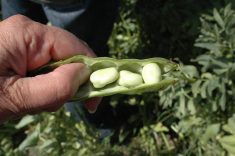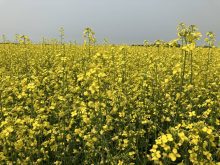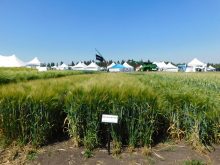There is no end in sight for a nine-month losing streak in which producers lost more than $30 per hog
Reuters / U.S. hog producers are losing hope for an early harvest of this year’s expected bumper corn crop, which could lower feed costs sooner rather than later, as wet fields continue to impede planting in parts of the Midwest, said producers and analysts at a pork industry meeting here June 7.
“It’s been a long haul,” said Iowa hog producer Conley Nelson, who was counting on a timely Midwest harvest after last year’s drought to boost corn supplies and ease prices in the red-hot corn market. “You go into a survivability mode and try to be as efficient as you can.”
Read Also

New crop insurer policy enables easier startup for faba beans
Agriculture Financial Services Corporation updated its normals for faba beans, which may open the door for more Canadian producers to feel comfortable growing the pulse crop in the future.
Iowa leads the nation in corn and hog production, harvesting 1.88 billion bushels in 2012, down 20 per cent from 2.36 billion in 2011. It currently has 20.3 million hogs, up three per cent from 19.7 million a year earlier.
Demand for corn from last year’s drought-ravaged crop has been intense. Purchases by ethanol plants, livestock producers, corn processors and exporters have made corn remaining from last year’s harvest scarce. The U.S. Department of Agriculture has forecast supplies will reach a 16-year low by the end of the marketing year on Aug. 31, just before harvest starts.
The cash market price of corn in the Midwest ranged from $7.16 to $7.56 per bushel this week, or 50 to 90 cents above the Chicago Board of Trade July futures contract. CBOT July corn futures closed Friday at $6.66-1/4 per bushel, about 70 cents more than a year earlier.
The cash corn market has been on fire all year, with ethanol producers, who use up to 40 per cent of the annual harvest, paying top dollar. Cash prices are expected to go higher this summer as corn supplies get tighter.
These historically high prices for corn — the primary feed grain for livestock — are squeezing hog, beef, dairy and poultry farmers the hardest despite very high wholesale and retail meat prices. Iowa State University researchers calculate hog farmers in April, on average, lost $31.66 for each hog sold, extending their streak of losses to nine months.
To stem the flow of red ink, some producers are feeding hogs less, marketing them at lighter weights and using distillers grains (DDGS), a feed byproduct of ethanol production, Nelson said.
Before harvest this autumn there are places in the Midwest where corn will be hard to buy at any price “and it could get ugly,” Paragon Economics president Steve Meyer told reporters at this week’s World Pork Expo.
Rain-delayed U.S. corn planting, which is the slowest in 17 years, means early harvested supplies are unlikely to be in marketing channels before September, crop specialists say.
The situation for soybeans, which are crushed into soyoil and the feed additive soybean meal, is not any better.
Several Midwest soy-crushing plants have shut early to conduct summer maintenance, citing scarce soybean supplies. Other crushers are scheduled to shut down for maintenance in July and plan a longer-than-usual break, Meyer said.
Another Iowa hog producer, Leon Sheets, said farmers were accustomed to minor variations each year in acquiring feed either because crops were planted too late or too early. But the extreme weather and markets in the last year had made planning for worst-case scenarios even more challenging.
“Perhaps the summer will change and we’ll harvest on schedule and everything will be fine,” Sheets said. “But in the event that it’s not, you really don’t want to wait until there is nothing in the bin to feed hogs and wonder where you’re going to go find it.”














